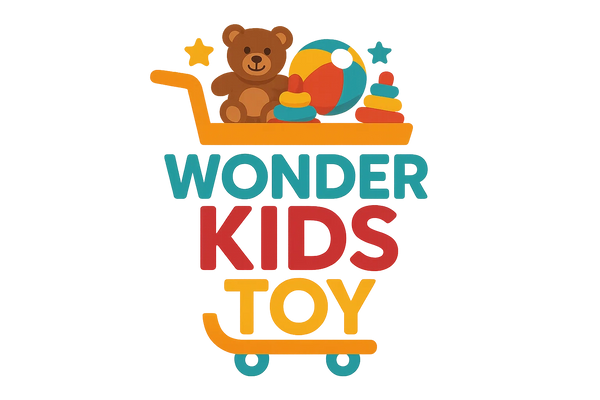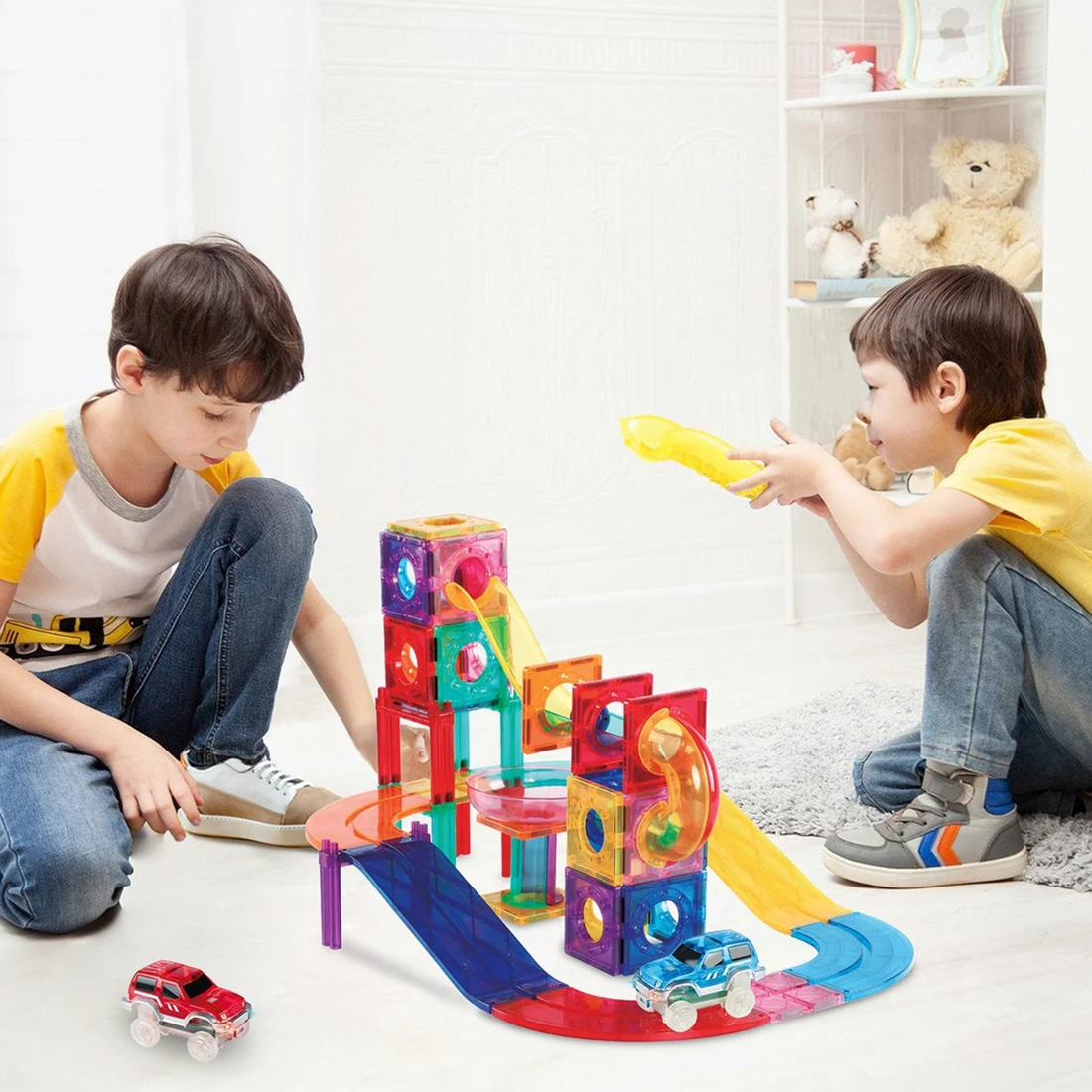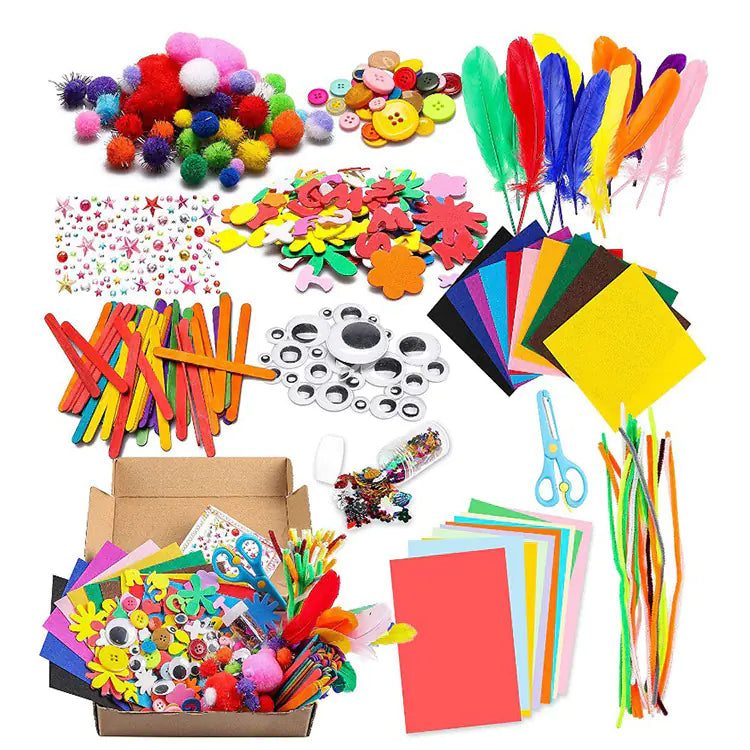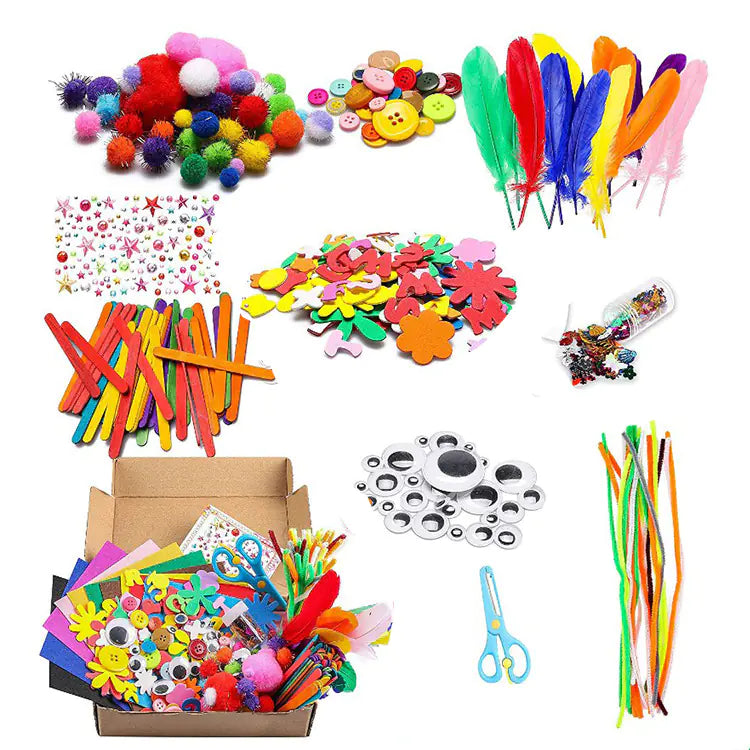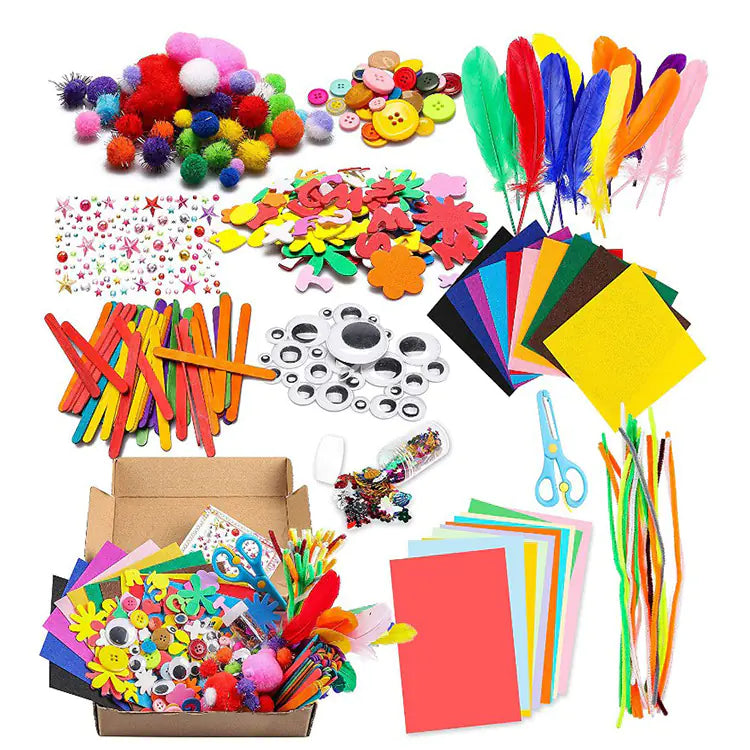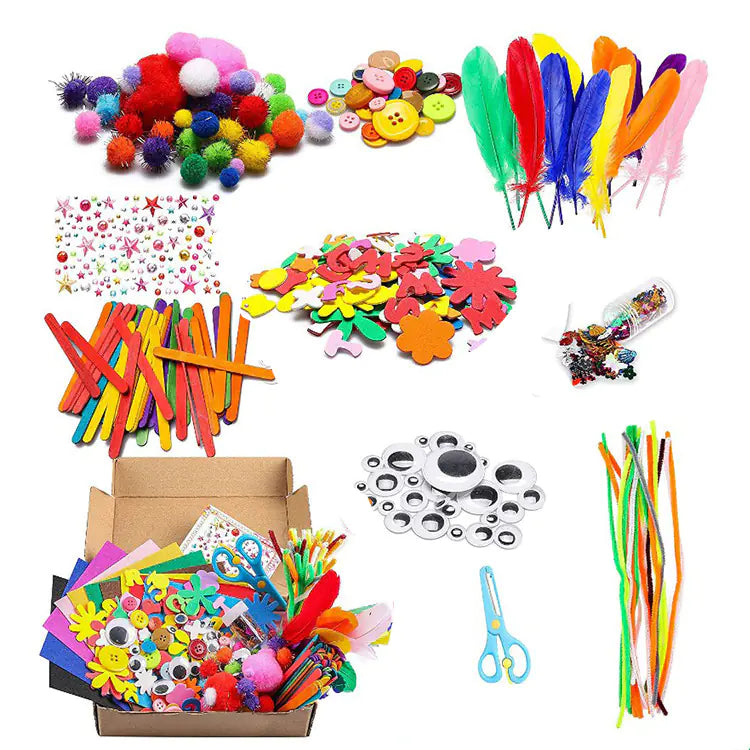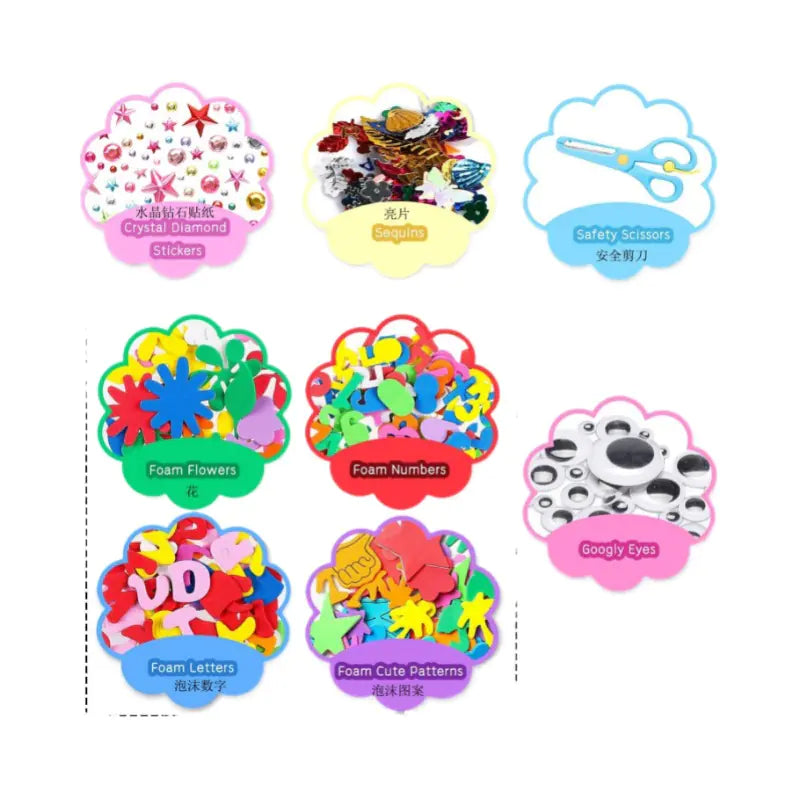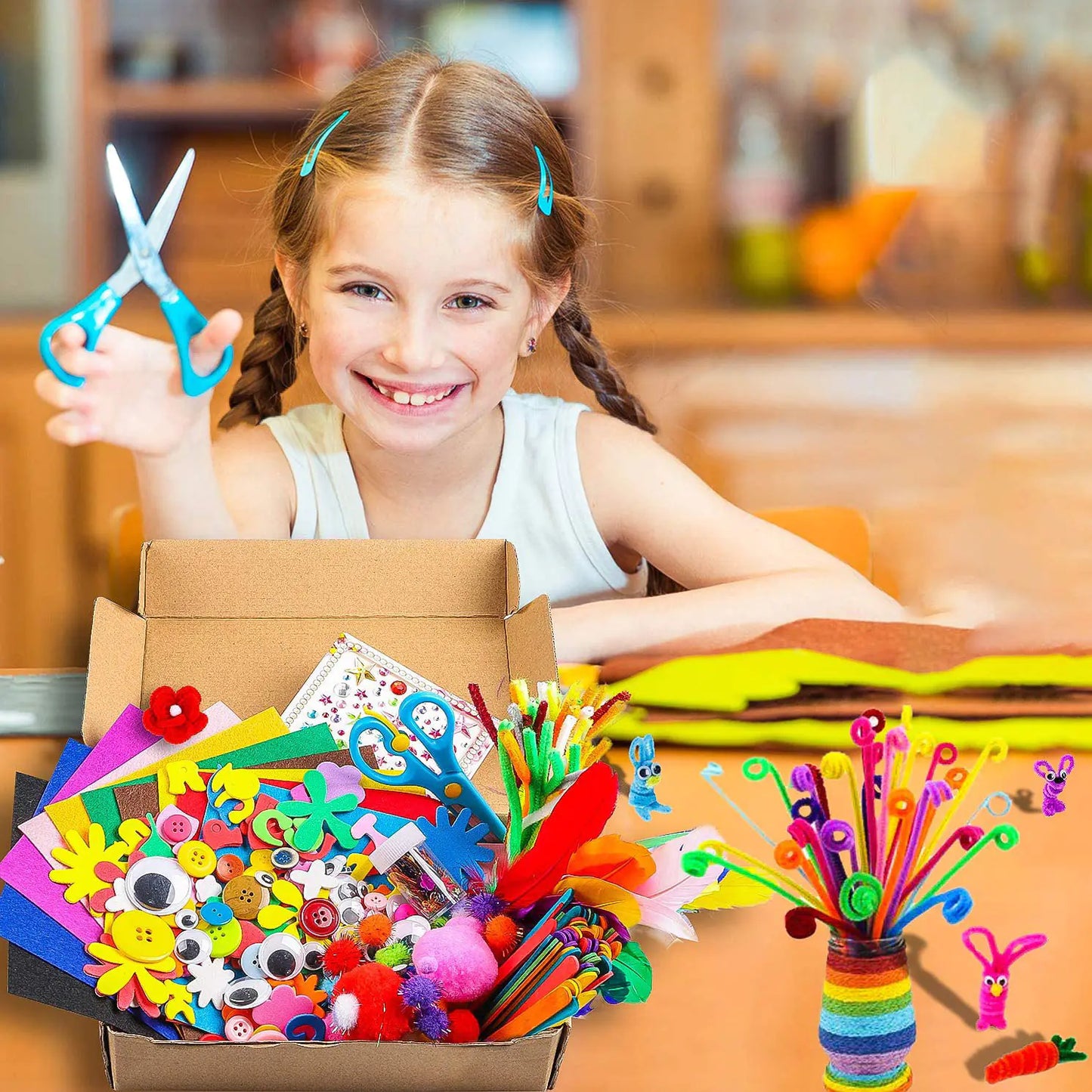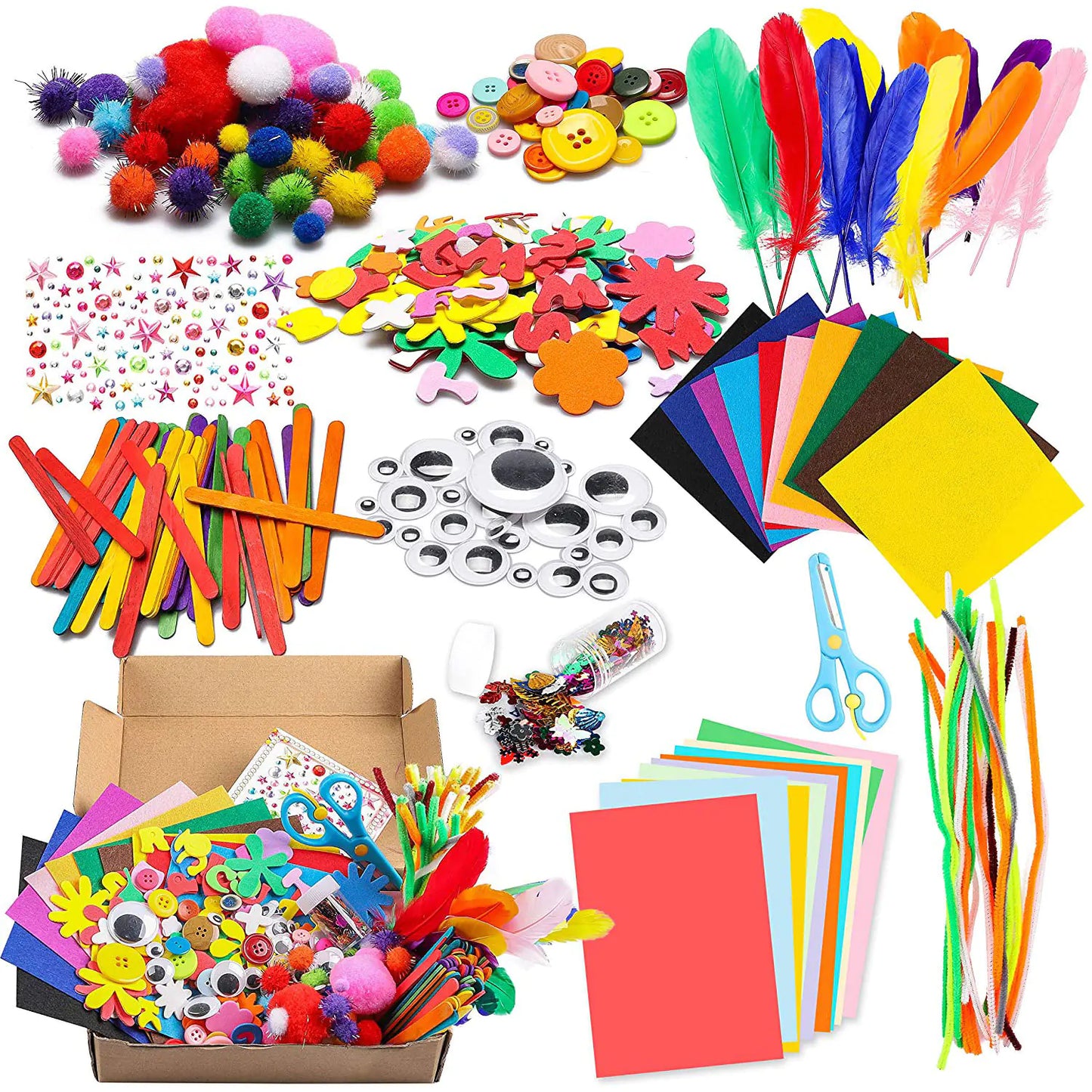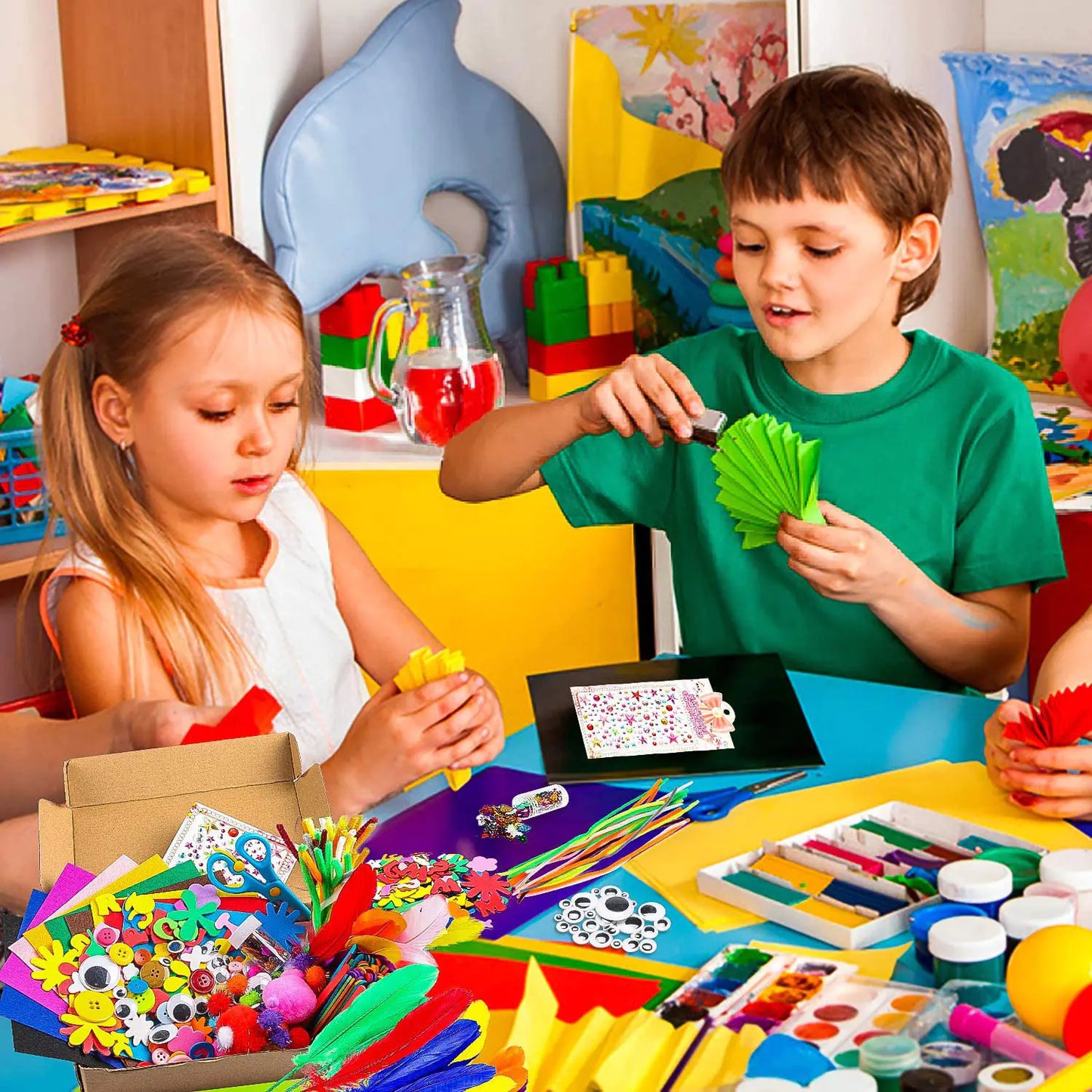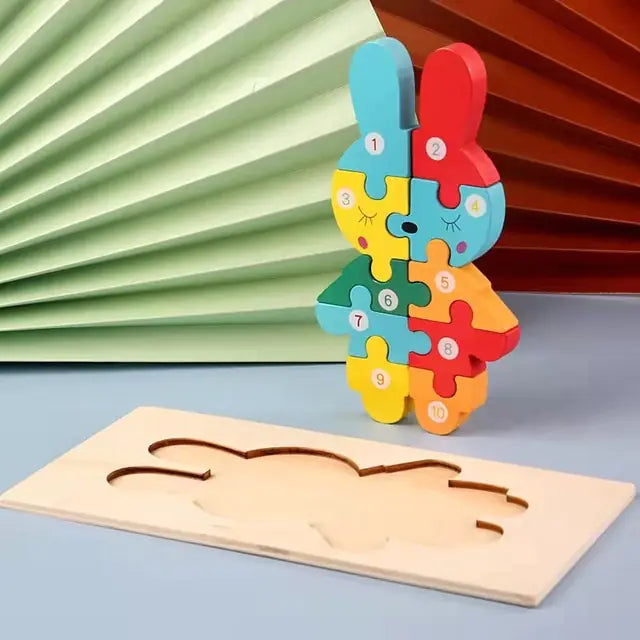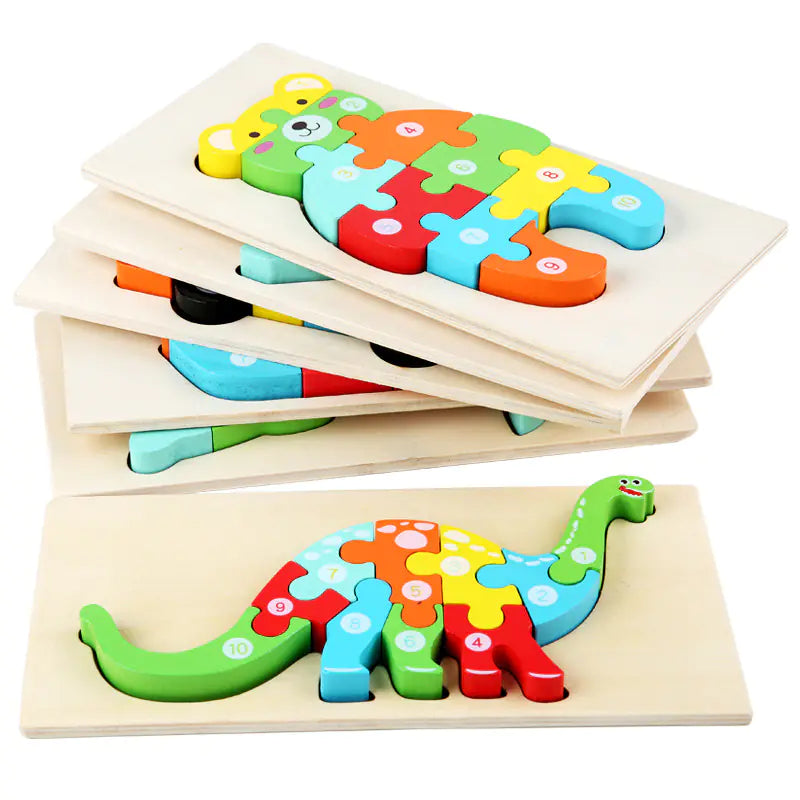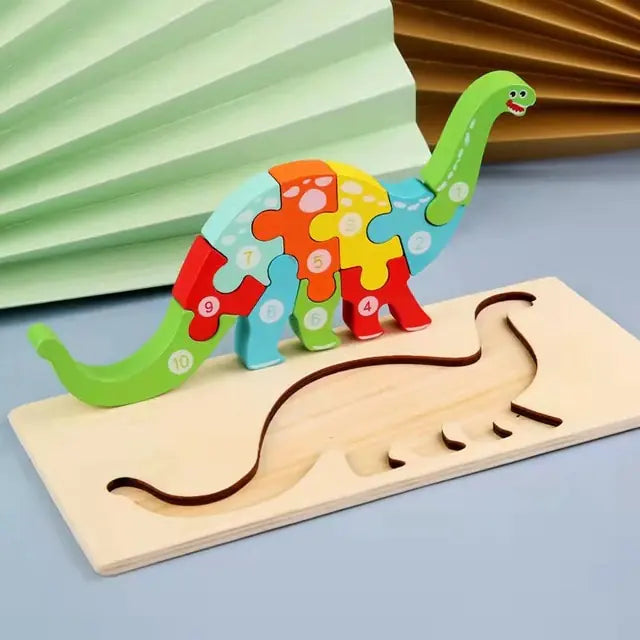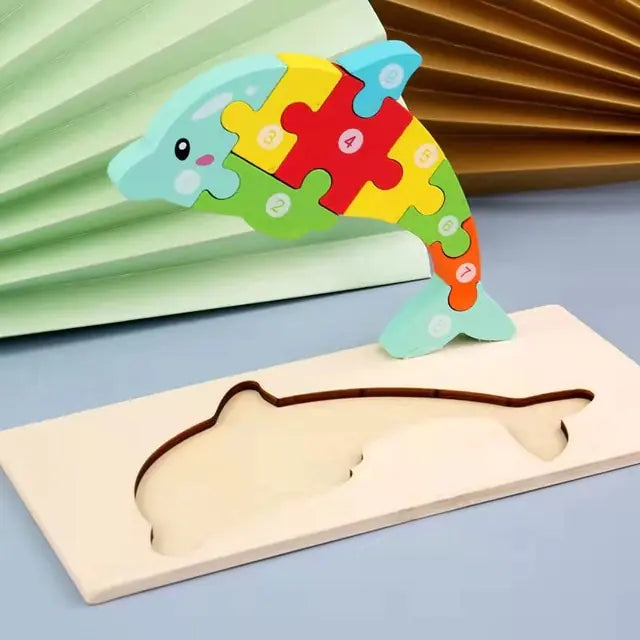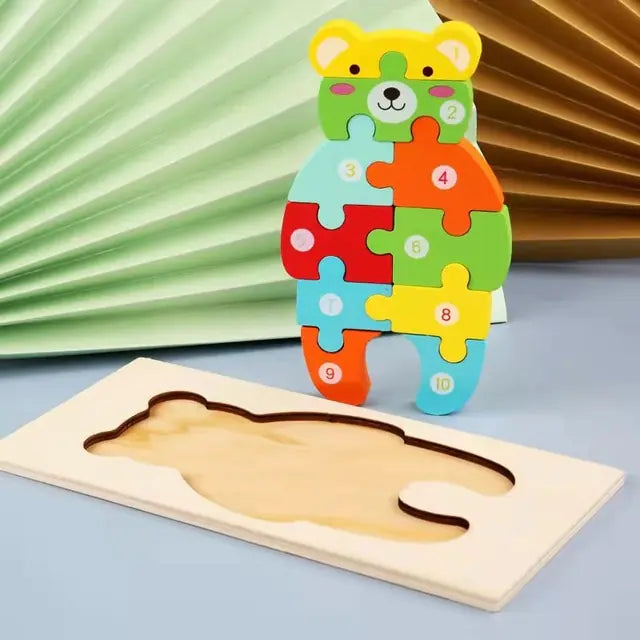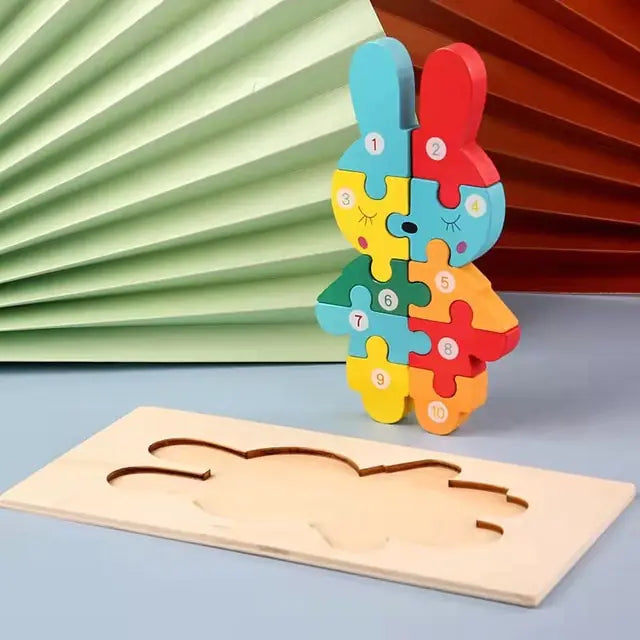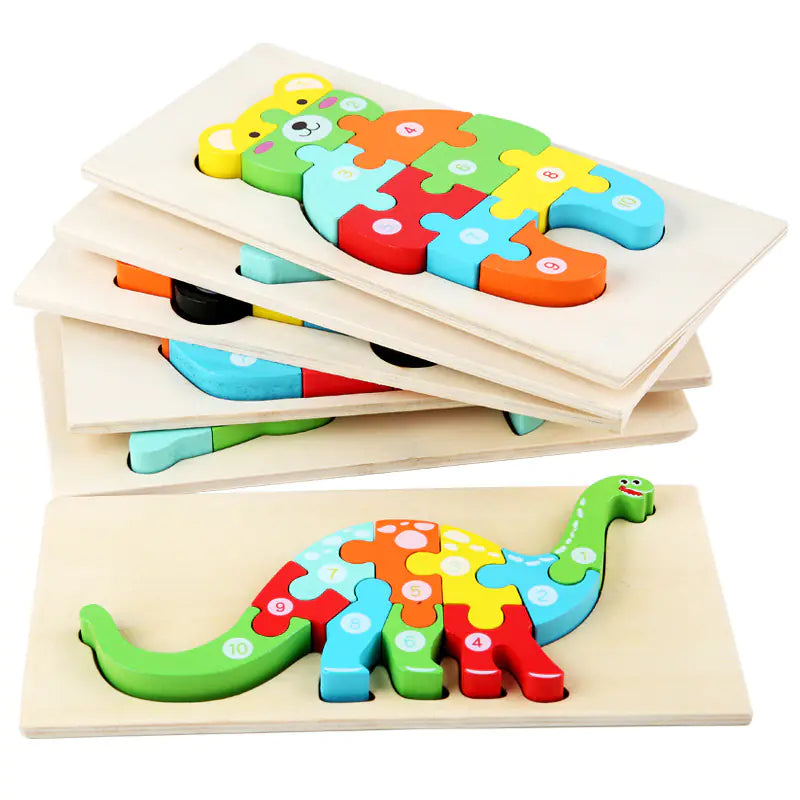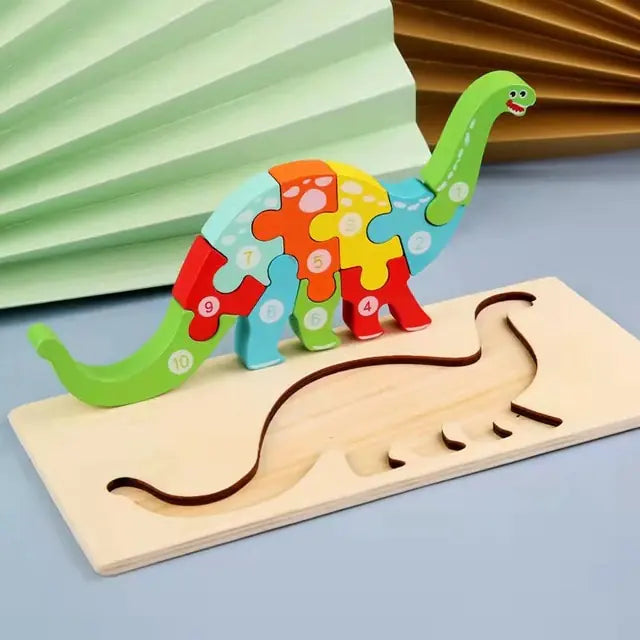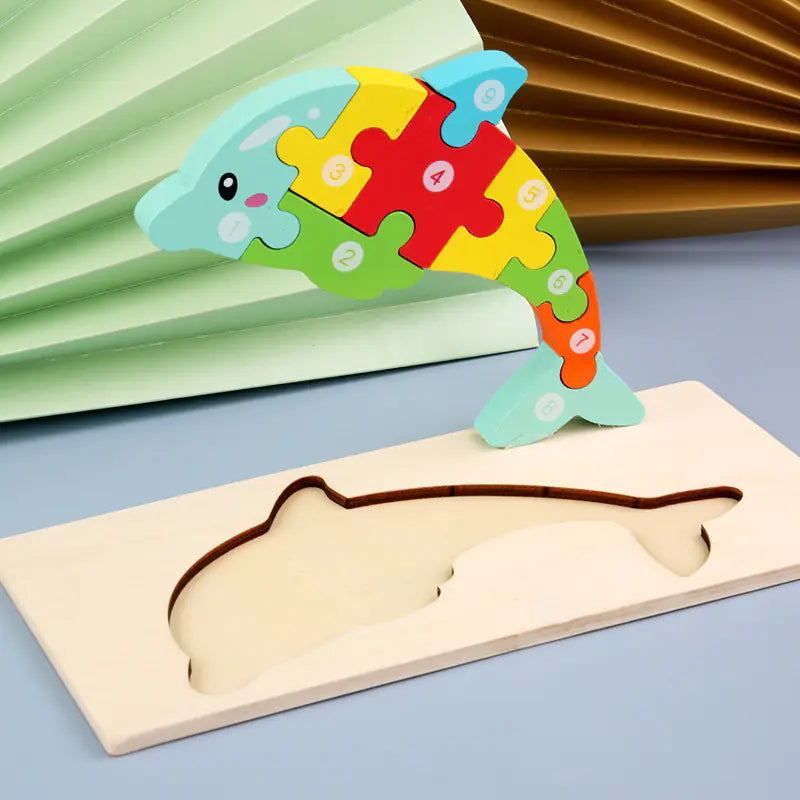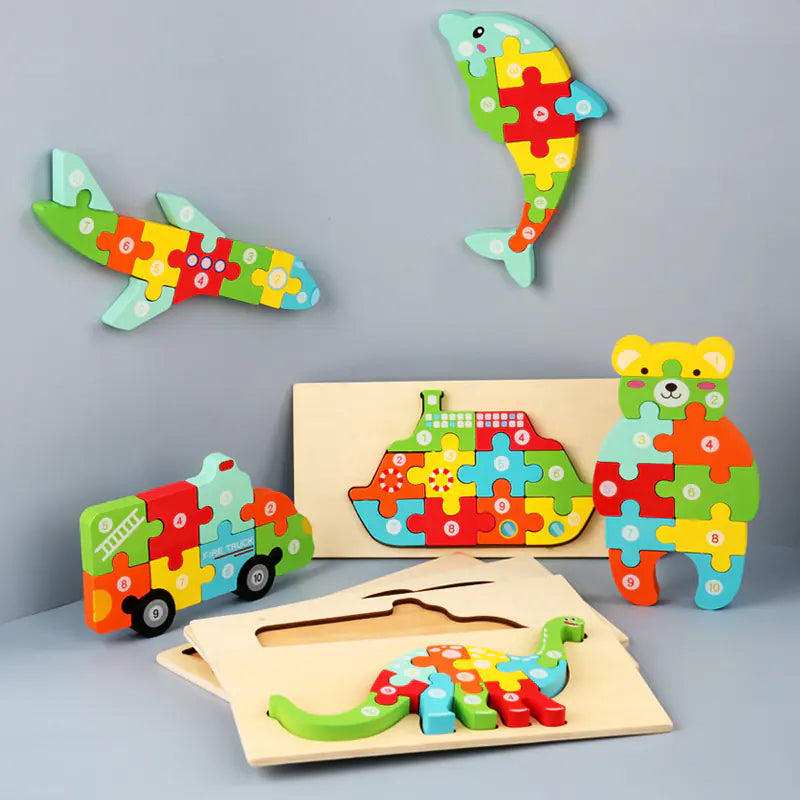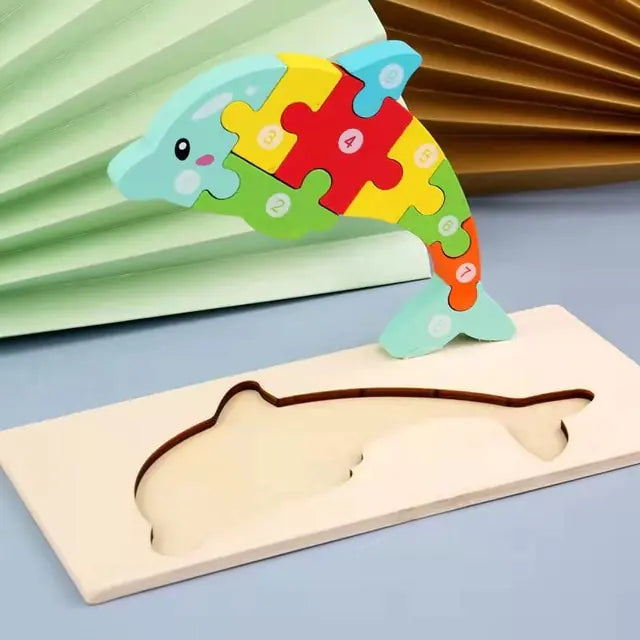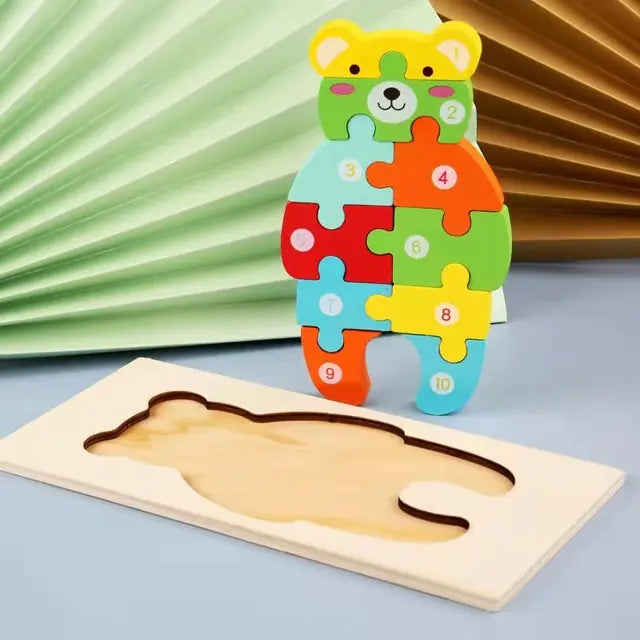Online Educational Toys for Kids - Enhance Learning & Development
Online educational toys are revolutionizing how kids learn by pairing entertainment with efficient learning of essential skills. These innovative educational toys help capture children’s imaginations and minds through hands-on, interactive play that inspires creativity, curiosity, and discovery.
Parents, too, can sometimes feel overwhelmed with choices. From STEM-focused kits to language-building games, families can select age-appropriate products that meet their children's needs. Available on various digital platforms, these tools have opened new and exciting possibilities for finding resources that match a child’s interests and learning objectives.
Most of these toys provide the added convenience of bringing learning home, a real boon for today’s on-the-go families. With online educational toys, kids can learn while having fun. They are rapidly establishing themselves as the go-to option for contemporary education.
What Are Online Educational Toys?
Online educational toys are my favorite kind of digital learning tools. They help supplement and support kids’ education in fun and engaging ways. These learning tools include mobile apps, video games, or web-based technologies. Every format provides a fun, new way to dive deep into exciting topics!
Coding apps, for example, teach valuable problem-solving skills, while interactive games develop math or language skills. They offer hands-on experiences that allow children to discover things at their own pace and make learning fun at the same time.
What sets these toys apart is their capacity to engage multiple learning styles. Whether a child learns best through visual aids, hands-on activities, or auditory instructions, there's likely a toy that fits the bill. The WhalesBot E7 Pro Coding Robot Kit introduces children to the world of coding in a fun way.
It helps kids get started in robotics while learning essential STEM concepts! These tools ignite curiosity through interactive exploration and experimentation, empowering kids with the critical thinking skills they need to thrive.
Engagement is the other part. These toys help children stay engaged by combining engaging play experiences with learning opportunities. Companies such as WhalesBot provide various products customized to multiple ages and skill levels, keeping children engaged and constantly challenged.
Parents can work to put their children’s tools seamlessly into their teaching routines, promoting creativity, imagination, and learning outside of school.
Benefits of Online Educational Toys
1. Boost Cognitive Skills
These online educational toys will help instill the seeds of critical thinking and cognitive development. Puzzles and logic games stimulate kids to think critically, analyze patterns, and create solutions. Memory games improve memory and retention by testing children to remember patterns or pairs.
Interactive quizzes, accessible from desktop to mobile, help solidify what students learn, providing a fun, hands-on way to learn and grasp new concepts. STEM-centered toys like coding games and online science experiments increase critical thinking abilities.
They further ignite a child’s imagination and curiosity about tech and nature. These creative activities combine imagination and discovery to keep little learners occupied while enriching their minds!
2. Encourage Problem-Solving Abilities
Most educational games have some challenging aspects that demand strategy and quick thinking. For example, games incorporating math skills require children to solve puzzles while racing against the clock, helping them learn to think quickly.
Most online platforms are designed to mimic real-life situations, such as running a virtual farm, so children can learn to make wise decisions. Trial-and-error gameplay develops resilience and adaptability, while the industry benefits from collaborative games that promote teamwork and communication, key competencies for solving collective problems.
These experiences help to develop confidence in approaching challenges, a skill that will serve kids their entire lives.
3. Promote Creativity and Imagination
Digital tools such as drawing apps and virtual design platforms expand access to artistic expression. Children can draw, build narratives, and assemble worlds, including developing metropolises in city-building simulations.
Storytelling apps allow kids to write and tell stories, building their creative authority. Role-playing games create opportunities to explore new identities.
Role-playing games can be one of the most welcoming types of games. These tools create imagination and creativity and allow kids to view the world through a different, optimistic, and possible lens.
4. Develop Fine Motor Skills
Some apps and games emphasize activities that involve movements that need fine motor control, such as drawing shapes or moving items. Real-world crafting activities, like building a toy or designing art, are replicated in virtual spaces.
Interactive activities, like virtual cooking or gardening, impart helpful life skills while honing fine motor skills and hand-eye coordination. Physical coordination motion-based games, which require physical movements such as dancing or sports, help kids stay active and develop their physical coordination.
These types of activities make it more likely that fine motor skills will be developed in a creative, enjoyable manner.
5. Enhance Social and Emotional Growth
Many online educational toys include multiplayer modes or community interactions to encourage communication and collaboration. Online platforms that let children share their projects, such as art or writing, promote a culture of collaboration, constructive feedback, and appreciation for others’ work.
Role-playing scenarios instill empathy by guiding children through various emotions and points of view. Being involved in virtual spaces focused on common passions develops deep friendships and offers a feeling of acceptance.
These components cumulatively build emotional intelligence and social skills, arming children with the tools to form authentic, fulfilling relationships with others.
How Technology Enhances Traditional Play
Combines Digital and Physical Play
Use toys that blend digital and physical elements to provide a complete play experience. For instance, new interactive building sets such as LEGO Boost meld traditional building with app-enabled coding. These kinds of toys help kids start to learn essential engineering concepts while keeping them active.
Augmented reality (AR) games like Pokémon push this further by superimposing digital elements onto the real world, encouraging outdoor exploration while playing. Children can traverse their communities while participating in digital quests, bridging the gap between offline exploration and online play.
Digital enhancements also benefit physical play. Apps such as Monopoly’s companion app further enhance the experience by automating mundane tasks or adding new game rules, ramping up the excitement. That perfect blend of old and new makes these iconic board games a hit today.
Moreover, tactile experiences like playing with blocks or puzzles alongside digital tools ensure that kids develop fine motor skills while enjoying the benefits of screen time.
Makes Learning Interactive and Fun
Educational gamified learning tools move traditional learning from a static process to an interactive experience. Games with rewards, levels, or achievements turn topics such as math or science into thrilling adventures. Educational platforms such as Kahoot! Help them retain their attention by learning through fun quizzes and challenges.
Along the way, kids are motivated by a strong sense of achievement. Interactive storytelling apps allow children to directly impact the story by deciding what happens next. This fosters vital decision-making skills and makes reading a fun and engaging activity!
Combined with real-world challenges such as scavenger hunts or trivia games, it produces the perfect blend of fun to enrich a traditional learning experience.
Adapts to Individual Learning Styles
Technology personalizes learning to meet each child’s needs, ensuring that education works for them. Platforms like Khan Academy even provide personalized recommendations for specific strengths and weaknesses, ensuring the material aligns perfectly with your child’s needs.
For spatial and visual learners, apps with bright colors, visual storylines, and animations break down even the most difficult concepts. Auditory learners fare best with programs that include verbal directions and lessons based on storytelling. Conversely, kinesthetic learners thrive using tools that promote active movement, like Osmo.
Parents can leverage app tracking features to monitor their child’s progress and adjust activities accordingly. This allows kids to get the support they need when they need it.
The flexibility to choose games or apps based on a child’s interests boosts engagement even more. Whether it’s programming, visual arts, or narrative design, technology allows kids to discover what excites them in their way and time.
Tips for Choosing Age-Appropriate Toys
Match Toys to Developmental Stages
Knowing your child's stage of development will help you choose toys that will entertain and teach. For one-year-olds, look for toys that help them practice new movements, such as big balls or push-and-pull toys. Seeing their eyes scan and crawl over soft, low objects is fun and encourages physical development.
During this period, creative play toys such as baby dolls and wooden blocks can ignite the imagination. Toddlers love puzzles or snap-together blocks, developing problem-solving skills as they sharpen their newly developed sense of danger.
Do your best work with toys that help them play for extended periods. Dress-up clothes, puppets, or building blocks can encourage more imaginative play and deeper engagement. Things that allow them to move and develop those big muscles, such as balls, are still crucial for physical development.
Evaluate where they are in their skills and select toys that lightly motivate them to achieve mastery of literacy or numeracy. Progression is important. As kids age, toys should continue introducing new ideas and meeting educational standards.
For instance, toys that help children learn to count or read introduce them to school concepts while being fun and age-appropriate.
Focus on Safety and Quality
Safety and quality are never optional. Choose toys made of non-toxic, durable materials that will withstand heavy use. Consumer reviews from parents and educators always emphasize improved safety and longevity.
Toys that are easy to clean will save you time and trouble, making them the smart option. Certification, such as ASTM or CPSC, means a toy meets specific safety standards.
Look for Educational Value
Toys that encourage critical thinking and problem-solving are a lasting investment. Blocks that help with spatial reasoning or games that help teach simple math skills are great choices.
Exploration-based toys like science kits spark curiosity and imagination while teaching children new skills. Creative tools like markers or crayons allow children to express themselves while developing fine motor skills.
Choose Toys That Grow With Children
Versatility is the biggest win. Toys that serve different purposes, such as building toys, grow with your child from early stages to more advanced play and learning and remain valuable as interests change.
For example, a simple set of blocks can evolve from stacking fun into designing complex buildings. Look for toys that will provide years of play for better investment.
Examples of Engaging Online Educational Toys
Interactive Learning Platforms
Engaging in online learning environments creates dynamic and personalized learning experiences. Websites like ABCmouse and Khan Academy Kids offer diverse subjects, from reading to math, for preschoolers to early elementary students.
For big kids, websites and apps like Prodigy Math Game combine gaming with math, keeping students challenged and engaged. Adaptive learning technologies, like those on DreamBox, automatically analyze and adapt content to align with a child’s pace, providing personalized learning experiences.
Platforms like Learning@Home offer easy progress-tracking features, making tracking development easier for parents and educators. These platforms ignite imagination while developing competence by combining fun, interactive content with easy-to-navigate designs.
Digital Storytelling Tools
Digital storytelling applications such as Storybird and Toontastic 3D allow children to create their own stories, enhancing their creativity and literacy skills. These mediums and devices foster language growth by building vocabulary and understanding through narrative.
Including audiovisual components such as sound, animation, and illustrations makes learning enjoyable and engaging. Creative apps such as Book Creator ignite collaboration by providing inclusive opportunities.
These tools allow children to share each other’s ideas and learn from one another, turning storytelling into an incredible collective journey.
Virtual Building and Stacking Games
Virtual construction games test creativity and problem-solving. Minecraft Education Edition is a great example that weaves in coding, geography, and teamwork lessons.
Nintendo Labo offers a unique blend of physical and digital building, helping kids learn engineering concepts in a fun and accessible manner. Magna-Tiles and LittleBits offer open-ended experiences that spur inventive solutions to challenges, and Dash the Robot makes coding fun with interactive missions.
These fun and engaging games encourage critical thinking skills and hands-on STEM learning.
Motion-Based Educational Games
Motion-based educational games combine physical activity with learning. For example, apps such as GoNoodle and Osmo Active Games develop motor skills, sometimes even while learning the fundamentals of math or geography.
These tag games stimulate focus, motor skills, movement, and engagement. By merging physical activity with education, they add a fun, kinetic element that stimulates both the body and brain.
| Age Group | Educational Focus | Interactivity Level |
|---|---|---|
| 4+ | Problem-solving (Robot Turtles) | Card-based, collaborative |
| 6+ | Creativity (Magna-Tiles) | Hands-on, open-ended |
| 6+ | Programming (Dash, Labo) | Coding, physical and digital building |
| 8+ | Engineering (LittleBits) | Modular circuits, interactive |
Online educational toys combine education and entertainment. They ignite imagination, enhance creativity, and inspire a love of learning. Play allows kids to learn and discover new ways with the right tools. From STEM-based problem-solving games to interactive puzzles and creative apps, these online educational toys pack a lot of positive punch for children of all ages. Technology adds another element by allowing learning to be more interactive and accessible.
Be intentional about choosing toys that are age-appropriate and appealing to the child. This small step can go a long way to help level the playing field. The aim is to maximize improvement and learning while maintaining fun and challenge.
Begin to find the countless possibilities at your fingertips today. These toys would unlock learning opportunities without compromising on playtime fun and engagement.
Frequently Asked Questions
What are online educational toys?
Online educational toys are fun, engaging digital learning toys that help children learn new skills and concepts. They fuse fun and education, allowing kids to build important cognitive, fine motor, and social skills while interacting with cutting-edge technology.
Are online educational toys beneficial for kids?
Indeed, they make learning joyful by fostering engaging and creative experiences. These educational toys develop problem-solving, critical thinking, and digital literacy skills, better-preparing kids for a technology-driven world.
How do I choose the best online educational toy for my child?
Choose toys to suit your child’s age, interests, and stage of development. Seek out fun and educational toys that are safe for a child’s age and abilities and have positive recommendations from reliable sources.
Are online educational toys safe for kids?
Yet, most reputable online educational toys are created with child safety as a priority. Avoid toys from unknown brands, look for parental controls, and monitor your child’s screen time to maintain a healthy balance.
Can online educational toys replace traditional toys?
No, they are not a replacement for traditional toys. Even though they add technological innovation, classic toys are essential for tangible, creative play and peer-to-peer interaction.
What skills can children learn from online educational toys?
From math to language to coding, kids can help save the planet while developing essential STEM skills and unleashing their creativity. Other toys focus on teaching emotional intelligence and teamwork skills through collaborative games.
Are online educational toys affordable?
Yes, they are all very affordable, so there’s something for every budget. With free apps and low-cost subscriptions, they are easy for most families to access.
